9. Provisioning: What's New
(Home)
Previous Next
1. Version Control Now Has Support for Provisioning Objects
Version control of core and Designer objects were
introduced in an earlier version. Now, in Designer 3.0, provisioning
objects such as DAL objects, Provisioning request definition objects,
team, roles, etc., can all be checked in and out of version control. The
Version Control view below illustrates this feature.
The Version Control view has a slightly different hierarchy for
provisioning objects. Underneath the User Application entry, you
see a node called Components. This is the main node under which
all provisioning objects are located. Application Configuration
and Locale Configuration are also new nodes in the tree. In
general, system objects and unsupported objects are also "visible" in
Version Control view.
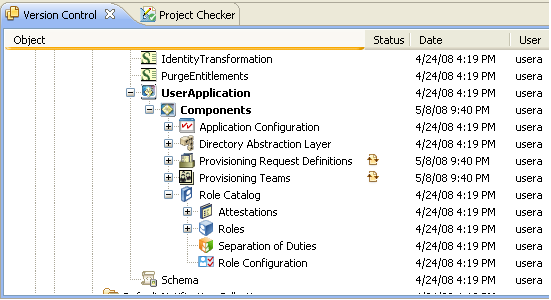
2. Role Vault Object Methods in Provisioning Request Definition
and in Forms
There is a new object which can be accessed and
is called RoleVault. The RoleVault object can be accessed anywhere where
ECMAScript expressions are allowed in activities. The object can also be
accessed from form events. The RoleVault object and its methods have
been added to expression builder as well.
In case of provisioning request definition activities, RoleVault in the
Expression Builder appear in the right side panel under Vault
Expressions. Under Vault Expressions, there are two
subcontainers, one of them is the new Role Vault. In addition, these new
script methods have been classified under various sub categories, such
as Container, Group, Role, SoD and User. an example is illustrated
below.
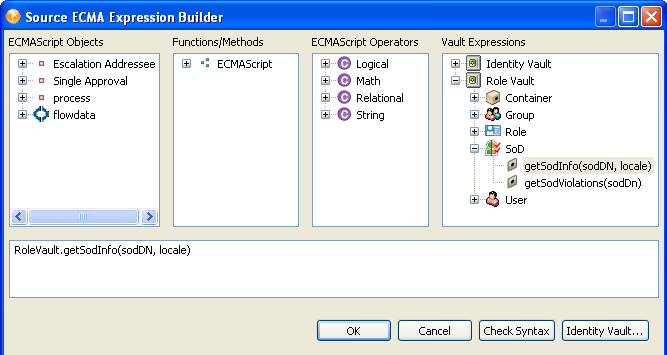
In case of forms, the Role Vault object and its methods appear to the
left side and under a generic Vaults object. The structure underneath
Role Vault is the same as it was for expressions in activities. an
example is shown below.
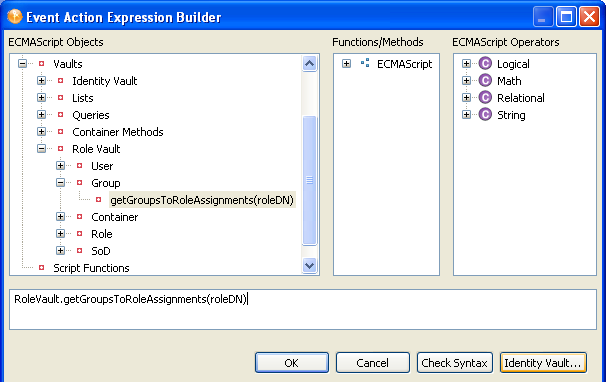
3. New Attestation Process Type for Provisioning Request
Definitions
In addition to Normal, Role Approval, and SoD
Approval, there is a new attestation process type PRD. However, these
PRDs can't be created or modified by the user. Also a user can't change
a process type to the attestation type PRD. Attestation type PRDs are
system defined and can be deployed to run attestation reports, etc., on
the User Application. Out of the box, there are two system PRDs: the
Attestation Report and the Attestation User Profile. The only operation
a user can perform is to define the RMB Properties on attestation type
PRD in order to modify the email notification choice and to add or
remove trustees.
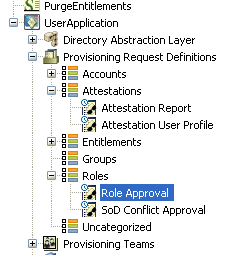
4. Provisioning Request Activities: New Request Role Activity
A new activity, Request Role, has been added.
This activity is used to either grant or revoke a Role to a User, Group,
or Container.
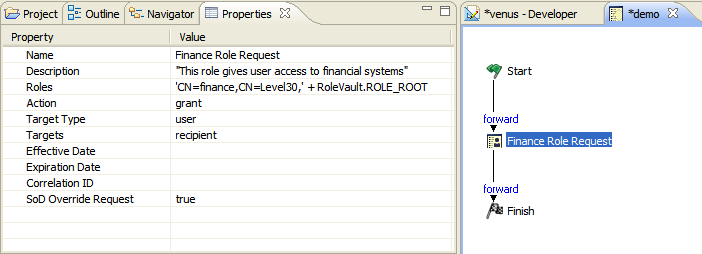
5. Provisioning Request Activities: New Start Workflow Activity
A new activity, Start Workflow, has been added.
This activity is used to start a workflow.
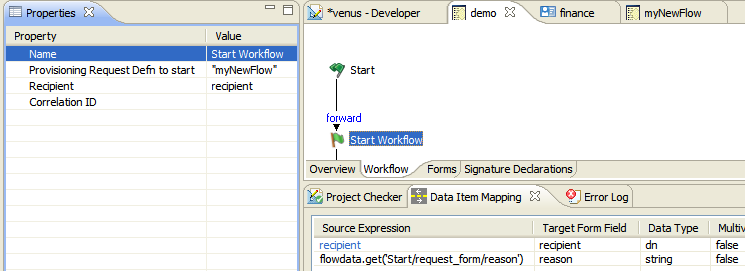
6. Importing Roles Defined in CSV Files
The Role Catalog provides a wizard for importing
roles that are defined in a comma separated value (CSV) file. For
example, if you define the set of roles you want to implement using a
spreadsheet, you can export the definitions of those roles to a CSV file
format, then use the Import Roles Wizard to add the roles to the Role
Catalog. The Import Roles Wizard can be accessed by selecting the Import
from CSV option from the Role Catalog, Roles, or a role level node.
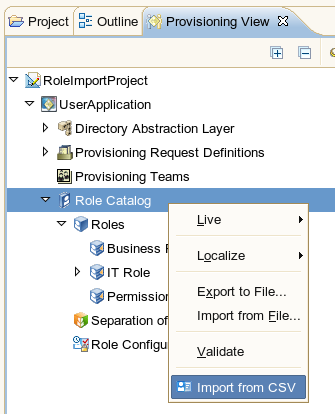
7. Migration to a 3.6.1 Driver
You can now migrate to a 3.6.1 UA Driver which
will install all the necessary components to support Attestation, such
as new attestation roles, prds, reports, and entities. To migrate, RMM click
on your UA Driver in the Provisioning View and select Migrate.
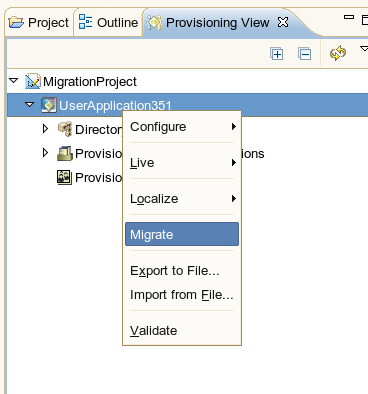
(Home)
Previous Next